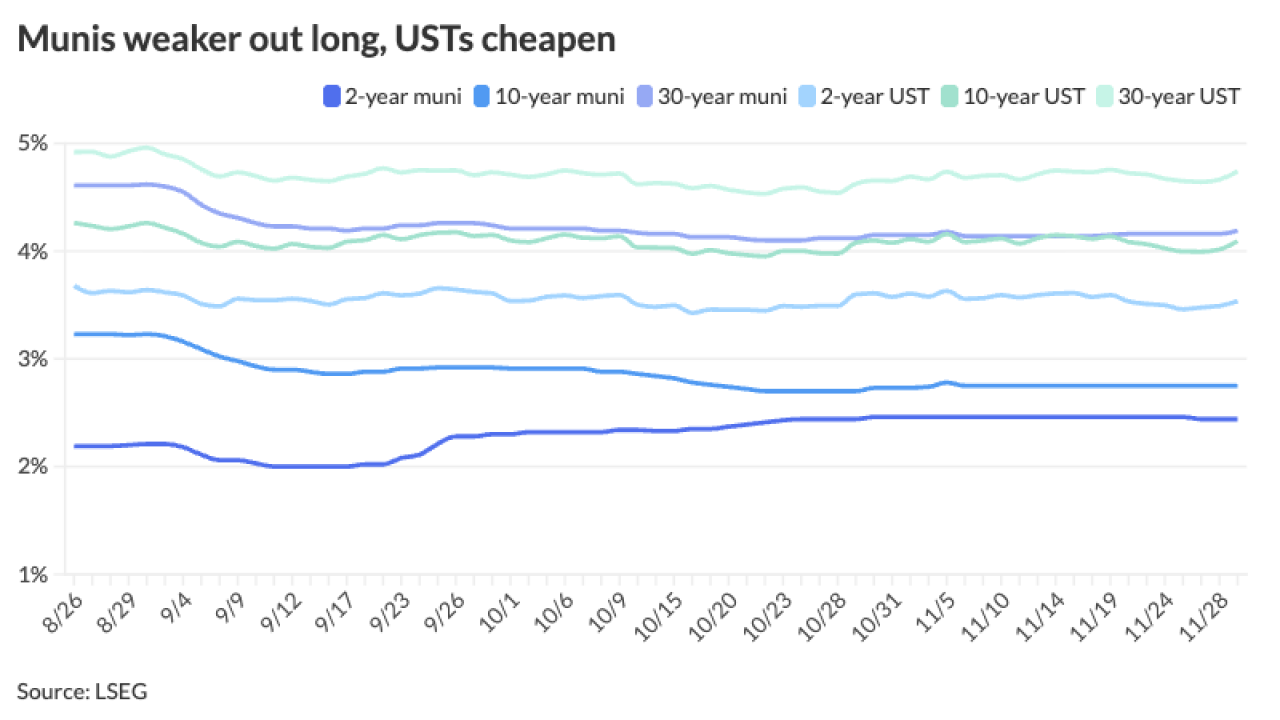New Jersey’s public colleges are suffering from financial neglect that is likely to continue as lawmakers focus on other fiscal priorities such as pension funding and transit infrastructure. .
State operating support for New Jersey public colleges has been flat in the last five years and failed to keep up with expense growth, according to Fitch Ratings analyst Emily Wadhwani. Some of New Jersey’s smaller public higher education institutions could face further margin hits in the next few years, according to Wadhwani, given that state aid is expected to remain near the same levels as lawmakers address other challenges, most notably the state's pension liabilities.

The financial headwinds came into focus last month when Fitch lowered ratings on four universities, citing state support limitations, among other underlying credit characteristics. Montclair State University, College of New Jersey, New Jersey City University, William Paterson University were all cut.
TCJ and Montclair State were both downgraded one level to A-plus from double-A minus and assigned stable outlooks. NJCU was lowered two levels to triple-B from A-minus, with its outlook revised to negative from stable. William Paterson was cut one notch to A-minus from A and its outlook lowered to negative from stable.
“We expect that increased funding for pension obligations could squeeze the state’s other funding priorities including higher education” Wadhwani said. “The level of operational support these schools are receiving has not kept pace.”
Escalating pension liabilities triggered 11 credit rating downgrades for New Jersey under previous Gov. Chris Christie between 2011 and 2017. The Garden State’s general obligation bond debt is now rated A-minus by S&P Global Ratings, A3 by Moody’s Investors Service and A by Fitch and Kroll Bond Rating Agency.
New Jersey has in recent years improved its pension funding levels, with the state now at 70% of the actuarially determined contribution, and is on track to be at a full ADC funding level in 2023. Wadhwani stressed that New Jersey’s commitment to increase pension funding and to fund contributions for university employees, despite absence of any legal requirement to do so, is a positive for the state’s credit conditions, though it could cause some volatility in operational support of public higher education.
Pension funding “could constrain some of the other funding priorities including higher education,” Wadhwani said. “It’s a bit of a double edged sword.”
Excluding Rutgers and New Jersey Institute of Technology, the Garden State’s public colleges saw a 28.8% decrease in state funding between 2006 and 2019, according to the New Jersey Association of State Colleges and Universities. Thomas Edison State University had the largest drop in that period at 35.4% from $6.6 million in 2006 to $4.2 million for the 2019 fiscal year.
The four downgraded colleges and Stockton University were reviewed by Fitch following a June revision of the agency’s higher education rating criteria that places increases emphasis on leverage through normal business cycle scenarios. Only Montclair State was downgraded as a result of the criteria change coupled with other credit considerations. Stockton’s rating was affirmed A-minus with a stable outlook.
Other credit factors Fitch accounted for in the downgrades included a competitive demand environment, challenging demographic characteristics and a broad reliance on student-fee generated revenue. Wadhwani said the downgrades reflect an increasingly competitive higher education climate that has led to reduced flexibility to increase tuition rates and long-term liability burdens.
While New Jersey’s public colleges received an increase of 5.3% in spending in the state’s 2020 budget, Wadhwani stressed that the boost is not enough to offset years of inadequate operational support. She said the state’s flagship school, Rutgers University, is not as affected by the funding gap, since the large institution has other revenue sources to tap into such as research grants.

Lisa Washburn, managing director at Municipal Market Analytics, said the Garden State’s public colleges face growing obstacles with funding given that lawmakers are more focused on other issues such as improving New Jersey Transit and providing more dollars to school districts.
“Even if there are additional revenues available to appropriate, meaningful increases in support for four-year higher education institutions probably won’t rank at the top of the legislative wish list,” Washburn said. “Addressing ill-performing public transit, aging infrastructure, school funding, and affordability issues are priorities that are likely to get more political attention and support.”
State support accounts for roughly 20% of Montclair State’s total budget and after years of flat operating support, general appropriations were boosted by $11.2 million, or 31%, in the 2020 fiscal year, according to university spokeswoman Erika Bleiberg. Montclair is able to generate additional federal and state research-related funding through its designation as a R2 doctoral university, which, combined with a recent $75 million capital campaign, has enabled the school to diversify its funding sources.
“Montclair State University is meeting the challenges of the competitive higher education landscape through a diversity of revenue sources, steady enrollment growth, and strong operating cost management,” Bleiberg said. “The University continues to grow its enrollment, even during the current period in which the number of college-age students is declining.”
Stockton is among the least funded of New Jersey’s public colleges, according to university spokeswoman Diane D’Amico, which has prompted the school to seek out other revenue opportunities, such as opening a satellite Atlantic City campus in 2018. D’Amico said Stockton has benefited in recent years from generous donor gifts and expects gradual, steady enrollment growth to help offset possible state funding shortfalls.
“We have relied on wise investments and maximizing revenue to remain accessible and affordable to students,” D’Amico said. “Stockton did receive some additional state funds this year, but achieving equitable funding remains a top priority for the university.”





